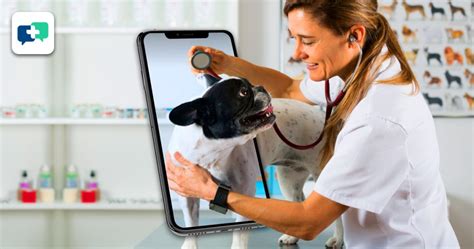The Rise of Vet Telehealth
In the wake of the COVID-19 pandemic, telehealth has become an increasingly important tool for veterinarians. Telemedicine consultations allow pet owners to connect with veterinary professionals remotely, making it more convenient and accessible to receive veterinary care.

Case Studies
Case Study #1: Remote Monitoring for Diabetic Cats
A 12-year-old diabetic cat named Mittens was struggling to regulate her blood sugar levels. Her owner, Sarah, was concerned about her pet’s health and sought the help of a veterinary telehealth service. The veterinarian prescribed a continuous glucose monitor (CGM) for Mittens, which allowed Sarah to track her pet’s blood sugar levels remotely. With the data from the CGM, the veterinarian was able to adjust Mittens’ insulin dosage and diet, resulting in a significant improvement in her health.
Case Study #2: Virtual Consultations for Skin Issues
A 6-year-old dog named Buddy was experiencing severe skin irritation. His owner, John, had taken him to several veterinarians but had not been able to get a definitive diagnosis. John then decided to consult with a veterinary telehealth service. The veterinarian conducted a virtual examination of Buddy’s skin and diagnosed him with atopic dermatitis. The veterinarian then prescribed a specialized shampoo and medication that helped to relieve Buddy’s skin irritation within a matter of days.
Innovations in Vet Telehealth
Artificial Intelligence (AI)
AI is being used to develop new tools and services that can improve the efficiency and accuracy of veterinary telehealth. For example, AI-powered image recognition can be used to diagnose skin conditions remotely, and AI-powered chatbots can be used to answer pet owners’ questions and provide triage support.
Remote Surgery
Remote surgery is a new and exciting technology that allows veterinarians to perform surgeries on animals remotely. This technology is still in its early stages of development, but it has the potential to revolutionize the way that veterinary care is delivered.
Wearable Devices
Wearable devices, such as GPS trackers and activity monitors, can be used to collect data on a pet’s health and activity levels. This data can be used to identify potential health problems and to monitor the effectiveness of treatment plans.
Benefits of Vet Telehealth
Convenience: Vet telehealth consultations can be conducted from anywhere with an internet connection, making it more convenient for pet owners to access veterinary care.
Accessibility: Vet telehealth services can help to increase access to veterinary care for pet owners in rural areas or who have limited mobility.
Cost-effectiveness: Vet telehealth consultations are typically less expensive than in-person visits, making them a more affordable option for pet owners.
Challenges of Vet Telehealth
Limitations: Vet telehealth consultations have some limitations compared to in-person visits. For example, veterinarians cannot perform physical exams or draw blood samples remotely.
Technical Issues: Technical issues, such as video conferencing difficulties or internet connection problems, can sometimes disrupt or delay pet telehealth consultations.
The Future of Vet Telehealth
Vet telehealth is a rapidly growing field that has the potential to revolutionize the way that veterinary care is delivered. As technology continues to advance, we can expect to see new and innovative tools and services that will make vet telehealth even more convenient, accessible, and effective.
How to Choose a Vet Telehealth Service
When choosing a vet telehealth service, it is important to consider the following factors:
Veterinarian Qualifications: Make sure that the veterinarians who provide telehealth consultations are licensed and experienced.
Services Offered: Consider the types of services that the telehealth service offers. Some services only offer consultations, while others offer a wider range of services, such as medication prescription and remote monitoring.
Cost: Compare the costs of different telehealth services to find one that is affordable for you.
Technology: Make sure that the telehealth service uses a secure and reliable video conferencing platform.
Customer Service: Choose a telehealth service that provides excellent customer service and support.
Additional Resources
- American Veterinary Medical Association (AVMA) Telehealth Guidelines
- American Animal Hospital Association (AAHA) Telehealth Standards
- North American Veterinary Community (NAVC) Telehealth Resources
Conclusion
Vet telehealth is a convenient, accessible, and cost-effective way to provide veterinary care to pets. As technology continues to advance, we can expect to see new and innovative tools and services that will make vet telehealth even more valuable for pet owners and veterinarians alike.





















